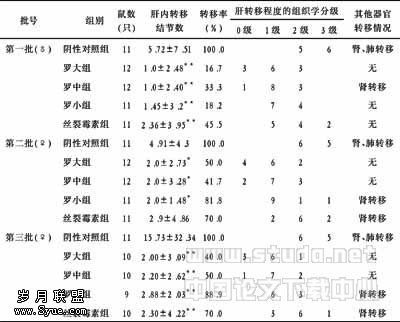E2A-PBX1融合基因阳性的儿童急性淋巴细胞白血病携带变异型融合转录本
作者:李志刚,赵玮,吴敏媛,胡亚美
【摘要】 为了研究儿童急性淋巴细胞白血病(ALL)中E2A-PBX1融合基因的表达,采用位于E2A基因不同位置的上游引物与下游PBX1引物,检测了410例儿童ALL,包括362例B细胞ALL和48例T细胞ALL。结果发现: 17例患儿携带E2A-PBX1融合基因,检出率4.1%,且全部为B细胞ALL,而且所有阳性病例均表达一种变异型融合转录本,后者是由E2A基因的第13外显子(159 bp)被差异剪切形成的。经BLASTn比对分析,这种转录本保持了原来的开放阅读框,但导致53个氨基酸残基的丢失。这53个氨基酸残基位于活化区2,会导致融合蛋白中部分环-螺旋结构以及全部七聚体亮氨酸重复序列的丢失。结论:携带E2A-PBX1融合基因的儿童ALL表达典型和变异型2种融合转录本,后者是由E2A基因第13外显子被差异剪切而形成的,它将导致融合蛋白中53个氨基酸残基及其所构成的部分环-螺旋结构以及全部七聚体亮氨酸重复序列的丢失。
【关键词】 急性淋巴细胞白血病
Variant Fusion Transcript in ALL Children with E2A-PBX1 Fusion Gene Positive
Abstract The study was aimed to investigate the expression of E2A-PBX1 fusion gene in children with acute lymphoblastic leukemia (ALL). The primers located at different sites of E2A and PBX1 gene were used to screen for the fusion gene in 410 children with ALL,including 362 cases of B cell ALL and 48 cases of T cell ALL. The results showed that 17 children carried the fusion gene. The positive rate was 4.1%. Furthermore,all the positive cases expressed a variant type of fusion transcript. It resulted from different splicing of the 13th exon (159 bp) of E2A gene. Analyses with BLASTn indicated that the variant type of transcript retained the open reading frame. However,the loss of 53 amino acid residues which were located at the 2nd activation domain resulted in the partial deletion of the putative loop-helix (LH) structure as well as the complete deletion of the heptad leucine repeat. It is concluded that all the children with ALL positive for the E2A-PBX1 fusion gene express typical and variant fusion transcripts. The latter resulted from different splicing of the 13th exon (159 bp) of E2A gene. The loss of 53aa would lead to the partial deletion of the putative loop-helix (LH) structure as well as the complete deletion of the heptad leucine repeat.
Key words ALL; E2A-PBX1 fusion gene; variant type of fusion transcript; 2nd activation domain
t(1;19)(q23;p13.3) 易位及其形成的E2A-PBX1融合基因是急性淋巴细胞白血病(ALL)中常见的染色体畸变及基因异常,大约5%的儿童[1-3]和 3.3%的成人[4]ALL携带这种异常染色体。早期的研究认为,t(1;19)易位与早期的复发相关,更为强烈的化疗能够抵消这种效应[1,2]。最近的研究证明,治疗方案的改进已使携带t(1;19)易位的儿童ALL预后极大改善,5年无白血病活存率已达89.5%[5]。
在本研究中,我们利用两套PCR引物,研究了儿童ALL的E2A-PBX1融合基因表达。发现所有携带E2A-PBX1融合基因的患儿除具有典型融合转录本外,全部携带一种变异型融合转录本。
材料和方法
病例
从2000年12月至2004年12月我院共收治410例儿童ALL,其中包括362例B细胞ALL和48例T细胞ALL。所有患儿均行骨髓细胞形态学、细胞化
学染色及免疫学检查,部分患儿进行细胞遗传学检查。我们采用多重巢式RT-PCR方法[6]在17例患儿检出E2A-PBX1融合基因,检出率4.1%。17例患儿中,男6例,女11例,年龄11个月到12岁,中位年龄7岁。
方法
标本
抽取初诊患儿的1 ml骨髓液,EDTA-K2抗凝。采用红细胞裂解液(含0.1% KHCO3、0.83% NH4Cl、 0.0037% EDTA-Na2)裂解红细胞。约106单个核细胞用于提取细胞总RNA。
提取细胞总RNA及逆转录反应
采用TRIZOL Reagent(购自美国Invitrogen公司)提取细胞总RNA。利用MMLV逆转录酶及随机六聚体(购自美国Promega公司)为引物将RNA逆转录为cDNA,-20℃冻存备用。
对照基因ABL的扩增
为避免RNA降解造成的假阴性,以ABL基因作为对照。引物序列和扩增条件分别见[7]和[8]。
E2A-PBX1融合基因的巢式PCR扩增
①典型融合转录本的扩增:引物序列[9]和位置分别见表1和图1。PCR扩增条件包括: 25 μl反应体系,含有10 mmol/L Tris·HCl(pH 8.3),50 mmol/L KCl,0.2 mmol/L dNTPs,1.5 mmol/L MgCl2,3.75 pmol引物,2 μl cDNA(第1轮反应)或1 μl第1轮PCR产物(第2轮反应),1 U Taq DNA聚合酶。93℃预变性3分钟,93℃变性40秒,51℃退火45秒,72℃延伸40秒,共35个循环,最后72℃延伸10分钟。②变异型融合转录本的扩增:引物序列[10]和位置分别见表1和图1。PCR扩增条件包括: 25 μl反应体系,含有10 mmol/L Tris-HCl(pH 8.3),50 mmol/L KCl,0.2 mmol/L dNTP,1.32 mmol/L(第1轮反应)或1.44 mmol/L(第2轮反应) MgCl2,5 pmol(第1轮反应)或6.25 pmol(第2轮反应)引物,2 μl cDNA(第1轮反应)或1 μl第1轮PCR产物(第2轮反应),1 U Taq DNA聚合酶。95℃预变性5分钟,95℃变性30秒,58℃退火30秒,72℃延伸1分钟,共25个循环,最后72℃延伸10分钟。Table 1. Primers used to amplify E2A-PBX1 fusion transcripts(略)
聚丙烯酰胺凝胶电泳和银染色 按照本室的常规方法进行。
PCR产物的测序
取100 μl的变异型E2A-PBX1扩增产物送上海博亚公司,采用PE公司ABI377型测序仪,利用E2A-4和PBX1-4两条引物从双向测定DNA序列。将DNA序列输入BLASTn进行序列比对。
结 果
E2A-PBX1融合基因和ABL基因的扩增
根据报道,采用E2A-1、PBX1-1、E2A-2和PBX1-2进行巢式PCR,可以获得典型融合转录本扩增片段[9]。我们的结果证实了上述结论,阳性片段大小为159 bp。电泳结果见图2A。
根据文献报道,采用E2A-3、PBX1-3、E2A-4和PBX1-4进行巢式PCR,可以获得典型融合转录本扩增片段,大小为376 bp[10]。我们的结果除获得376 bp的阳性片段外,尚可见217 bp的片段。电泳结果见图2B。
所有标本均可见ABL基因扩增片段。电泳结果见图2C。
变异型融合转录本扩增片段的测序和BLASTn比对
测序结果见图3。将双向测序结果加以拼接,并输入BLASTn进行比对分析,发现该片段是由E2A基因的第13外显子(159 bp)剪切所形成。剪切并未影响PBX1基因和开放阅读框,因此没有形成移码突变。典型与变异型序列的比较见图4。
讨论
t(1;19)易位在衍生19号染色体上形成了E2A-PBX1融合基因。在mRNA水平,由E2A基因的第14外显子和PBX1基因的第12外显子相连接形成融合转录本[11]。目前已发现2种E2A-PBX1转录本,编码2种融合蛋白,P85和P77,二者只在PBX1部分的羧基端存在差异,并都具有转化特性,属于癌蛋白[11]。
本研究发现的变异型融合转录本是由E2A基因的第13外显子被差异剪切掉形成的,若要检测出这种转录本,所用E2A引物必须位于第12外显子及其上游。文献中用于扩增E2A-PBX1融合转录本的引物较多,其中E2A引物大多位于第13或14外显子,少数位于第12与13外显子交界处。本研究使用的E2A-1位于第12-13外显子交界处,其3’ 端有13个碱基位于第13外显子内,E2A-2位于第13-14外显子交界处,其5’ 端有12个碱基位于第13外显子内,因此只能扩增出典型融合转录本。而E2A-3和E2A-4均位于第12外显子,因此能够同时扩增出典型和变异型两种融合转录本。另一方面,测序结果也证实了变异型转录本的存在。综合两套引物的检测结果,可以认为所有患儿的白血病细胞都同时表达两种融合转录本。至于使用E2A-3和E2A-4只在5例患儿中检出典型融合转录本,其余患儿只能检出变异型转录本,可能是由于我们采用的PCR条件更适于变异型转录本的扩增。
E2A基因是淋巴细胞分化的重要调节基因,直接参与免疫球蛋白(Ig)基因重排,调节外周血成熟B细胞的Ig类别转换,同时也在多个阶段参与胸腺细胞的选择与分化[12,13]。E2A蛋白属于碱性螺旋-环-螺旋(bHLH) 家族,包含2个活化区,即AD1和AD2[14-16],E2A-PBX1融合蛋白仍保留了这两个活化区。变异型融合转录本丢失了159bp,但没有影响开放阅读框,没有造成移码突变,因此仍将转录出融合蛋白,但丢失了53个氨基酸。值得注意的是,缺失的这53个氨基酸恰恰位于AD2区,将导致环-螺旋结构的部分丢失和七聚体亮氨酸重复结构的全部丢失[15,16](图5)。
在HeLa细胞和酵母,环-螺旋结构具有活化功能[16],七聚体亮氨酸重复结构可能参与和其它拉链蛋白的相互作用[15]。AD2区的完全缺失或七聚体亮氨酸重复结构的前2个亮氨酸的定点突变,将严重损害E2A蛋白的转化功能和/或反式活化潜能[15,17]。另一方面,AD2区具有功能选择性,其作用在胰岛β细胞更为重要[15],而AD1区在许多其它组织包括淋巴细胞中具有重要作用[14]。 因此,变异型融合蛋白的功能尚需深入研究。
【文献】
1Pui CH,Raimondi SC,Hancock ML,et al. Immunologic,cytogenetic,and clinical characterization of childhood acute lymphoblastic leukemia with the t(1;19) (q23;p13) or its derivative. J Clin Oncol,1994; 12:2601-2606
2Hunger SP. Chromosomal translocations involving the E2A gene in acute lymphoblastic leukemia: clinical features and molecular pathogenesis. Blood,1996; 87:1211-1224
3Raimondi SC. Current status of cytogenetic research in childhood acute lymphoblastic leukemia. Blood,1993; 81:2237-2251
4Foa R,Vitale A,Mancini M,et al. E2A-PBX1 fusion in adult acute lymphoblastic leukaemia: biological and clinical features. Br J Haematol,2003; 120: 484-487
5Pui CH,Relling MV,Downing JR. Acute lymphoblastic leukemia. N Engl J Med,2004; 350:1535-1548
6李志刚,吴敏媛,赵玮等. 多重RT-PCR检测白血病29种染色体易位形成的融合基因. 中华血液学杂志,2003; 24: 256-258
7Beillard E,Pallisgaard N,van-der-Velden VH,et al. Evaluation of candidate control genes for diagnosis and residual disease detection in leukemic patients using ’real-time’ quantitative reverse-transcriptase polymerase chain reaction (RQ-PCR) - a Europe against cancer program. Leukemia,2003; 17:2474-2486
8van-Dongen JJ,Macintyre EA,Gabert JA,et al. Standardized RT-PCR analysis of fusion gene transcripts from chromosome aberrations in acute leukemia for detection of minimal residual disease. Report of the BIOMED-1 Concerted Action: investigation of minimal residual disease in acute leukemia. Leukemia,1999; 13:1901-1928
9Izraeli S,Janssen JW,Haas OA,et al. Detection and clinical relevance of genetic abnormalities in pediatric acute lymphoblastic leukemia: a comparison between cytogenetic and polymerase chain reaction analyses. Leukemia,1993; 7:671-678
10Pallisgaard N,Hokland P,Riishoj DC,et al. Multiplex reverse translocation-polymerase chain reaction for simultaneous screening of 29 translocation and chromosomal aberrations in acute leukemia. Blood,1998; 92:574-588
11Kamps MP,Look AT,Baltimore D. The human t(1;19) translocation in pre-B ALL produces multiple nuclear E2A-Pbx1 fusion proteins with differing transforming potentials. Genes Dev,1991; 5:358-368
12Aspland SE,Bendall HH,Murre C. The role of E2A-PBX1 in leukemogenesis. Oncogene,2001; 20:5708-5717
13Mikkers H,Allen J,Berns A. Proviral activation of the tumor suppressor E2a contributes to T cell lymphomagenesis in EmuMyc transgenic mice. Oncogene,2002; 21:6559-6566
14Massari ME,Jennings PA,Murre C. The AD1 transactivation domain of E2A contains a highly conserved helix which is required for its activity in both Saccharomyces cerevisiae and mammalian cells. Mol Cell Biol,1996; 16:121-129
15Aronheim A,Shiran R,Rosen A,et al. The E2A gene product contains two separable and functionally distinct transcription activation domains. Proc Natl Acad Sci USA,1993; 90:8063-8067
16Quong MW,Massari ME,Zwart R,et al. A new transcriptional activation motif restricted to a class of helix-loop-helix proteins is functionally conserved in both yeast and mammalian cells. Mol Cell Biol,1993; 13:792-800
17Monica K,LeBrun DP,Dedera DA,et al. Transformation properties of the E2a-Pbx1 chimeric oncoprotein: fusion with E2a is essential,but the Pbx1 homeodomain is dispensable. Mol Cell Biol,1994; 14:8304-8314











